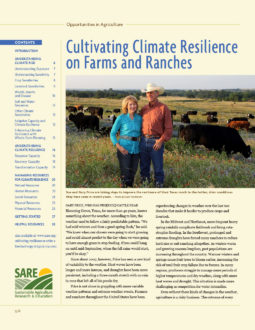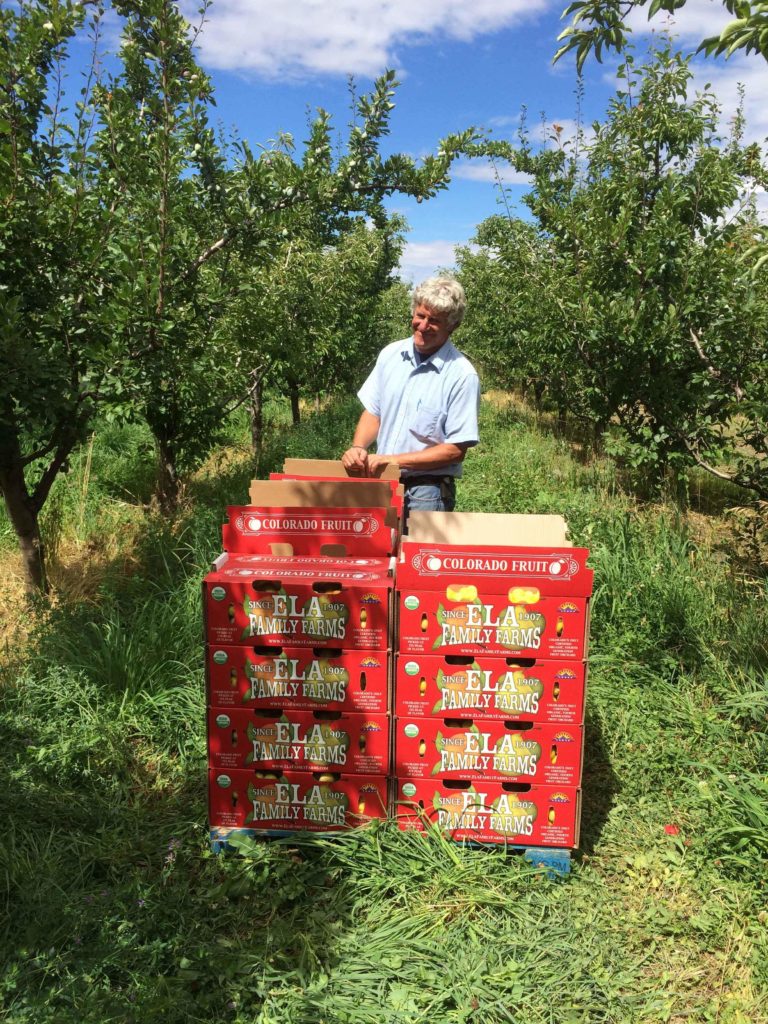Because your operation is located in a specific place, it is subject to a unique set of ecological, social and economic conditions, all of which influence your management decisions. For example, ecological conditions such as local topography, seasonal weather patterns, climate and the quality of natural resources on the farm or ranch—particularly soil and water—shape the choices you make about the kinds of crops and livestock to produce and how to produce them. Similarly, your management decisions are influenced by social and economic conditions both on and off your farm or ranch, such as family relationships, family business, personal goals, government regulation and support programs, access to financial and technical resources, marketing opportunities and community support for agricultural businesses. Within the limits created by these conditions, you can take action to strengthen what is known as the adaptive capacity or resilience of your production system.
A farm or ranch with high adaptive capacity will be more resilient to changing weather patterns. Resilience is the ability of a farm or ranch to respond to weather-related events in ways that avoid or reduce potential damages, to recover swiftly when there is damage, and to take advantage of new opportunities created by changing weather patterns. As resilience increases, climate risk to your operation falls. A more in-depth look at how resilience works on farms and ranches and how you can manage for resilience is provided in Parts Two and Three of this bulletin.
Steve Ela, a fourth-generation grower near Hotchkiss, Colo., manages 100 acres of organic apples, pears, peaches, cherries, plums and tomatoes. Although the lengthening season has improved growing conditions for some fruits, production risks have increased, particularly in the last decade. “We’re experiencing earlier springs and more variable temperatures in the spring,” Ela said. “It used to be one year in 10 we would expect a really bad year, maybe another two or three years we would have some frost. Now we have frost every year. The one-in-10 year with a 10 percent crop, that still holds, but now we’re having 50 percent crops many other years.”
While unsure if the weather changes he has noticed in the last decade are normal variations or early signs of climate change, Ela has nonetheless made a number of adjustments to his production system to improve his resilience and remain profitable. For example, in the past, farmers in his region did not need wind machines for frost protection, and Ela had only a few to protect particularly sensitive trees. Now, wind machines cover his entire farm. He has also diversified into new crops and more frost-tolerant cultivars.
Ela also began direct marketing his products about 15 years ago to retain more control over pricing. In a region that has lost 75 percent of its fruit growers over the last 20 years, he thinks that direct marketing, which provides high returns and product flexibility, has contributed to his continued success. “With the direct marketing,” he said, “more control on price means we don’t have to hit a home run every year to still be viable.” Direct marketing, he added, also provides his operation additional risk management because it allows him to plant varieties that might not be suitable for wholesale markets but have characteristics that can be handled in direct markets. The uniform product requirements of commodity markets, Ela said, increase risks in fruit production because growers are not free to select varieties best adapted to their particular farm conditions.

